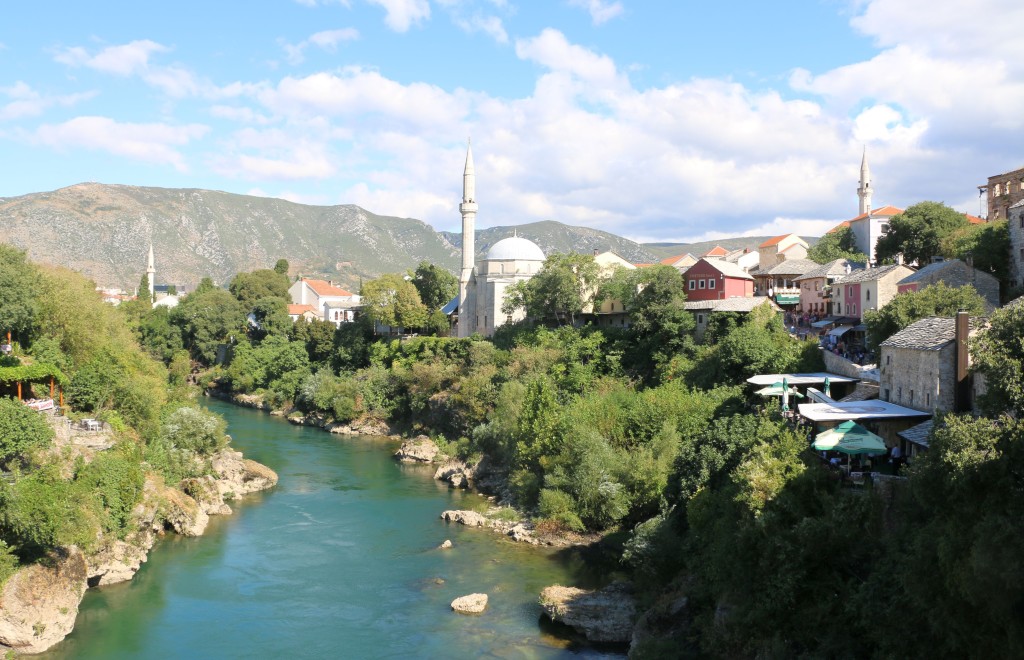
On our camper trip around Europe in September we made a stop in Mostar. I always have a nostalgic feeling when I visit this beautiful place, as I still remember how it looked like before the 1990s war.
Yes, the old town seems untouched now, the famous bridge was rebuilt and the attractively restored Ottoman quarter attracts thousands of tourists, who are eager to visit this UNESCO World Heritage site. Everybody wants to see the architectural masterpiece “Stari Most” and learn more about the bloody war that destroyed Mostar – once THE example of a successful multi-ethnic community in Yugoslavia, where Orthodox, Catholic and Muslim people happily lived together.
Around 2,000 inhabitants lost their lives during the Siege of Mostar and what really happened can still be seen in the outskirts of the town. Bullets have left their scars in the walls of many abandoned buildings, while numerous homes have been reduced to skeletons and ruins.
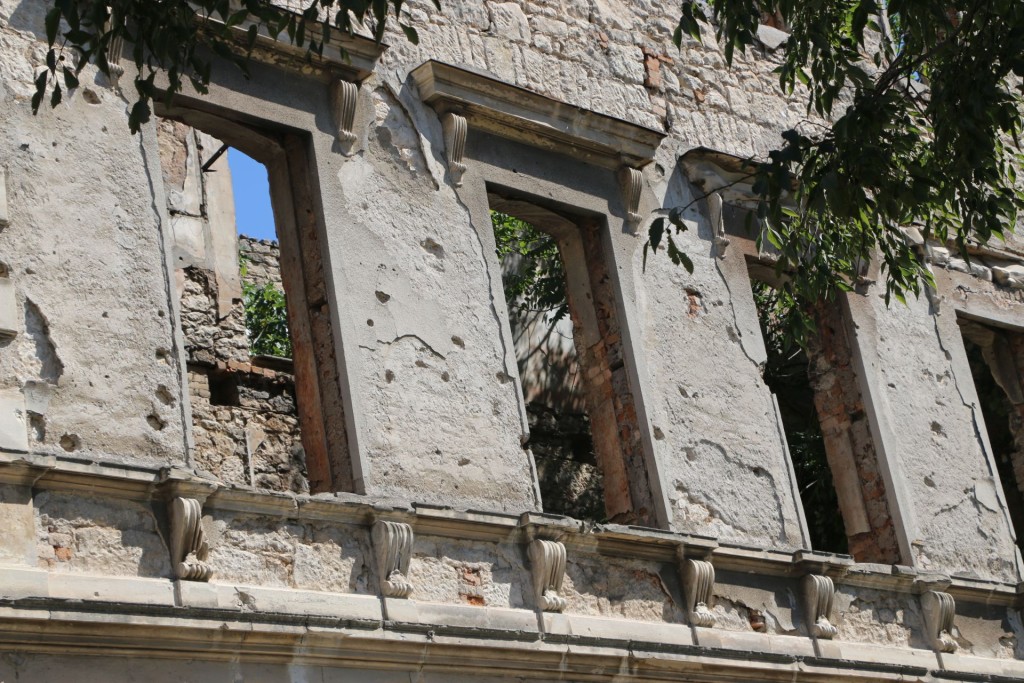
What a difference with the atmosphere on and around the bridge, where tourists take millions of photos, from all sides and corners! It is a special experience to pass from one side to the other, but take care: the bridge is steep and the stone surface slippery (Tip: wear good shoes!).
Built by the Ottomans in the 16th century, “Stari Most” was completely destroyed in 1993, but with international support an exact replica was made in 2004, using stones from the same quarry.
On the right side of the bridge’s tower is the War Photo Exhibition, where you can see a lot of photographs from the Bosnian war. The stone with the words “Don’t forget ’93” offers an important message: Let it never happen again!
The cobbled streets along the river were lined with pubs, restaurants and stalls selling trinkets. I was not amused to see so many war memorabilia in the souvenir shops: engraved bullet casings made into pens, anti-aircraft shell casings (€5-8) and even mortar shell casings (up to €50), but I understand that “war tourism” is a symbol of our time. Mostar is not the only place where human disasters of any kind give “extra spice” to a tourist visit or day trip…
Other typical souvenirs I noticed were photographs, paintings and copper engravings representing the former Yugoslav president Tito. T-shirts in all colors showed his picture with the words “Tito was a good guy” or “Tito was equally loved by Serbs, Croats and Bosnian Muslims”. Nostalgic or commercial? I really don’t know.
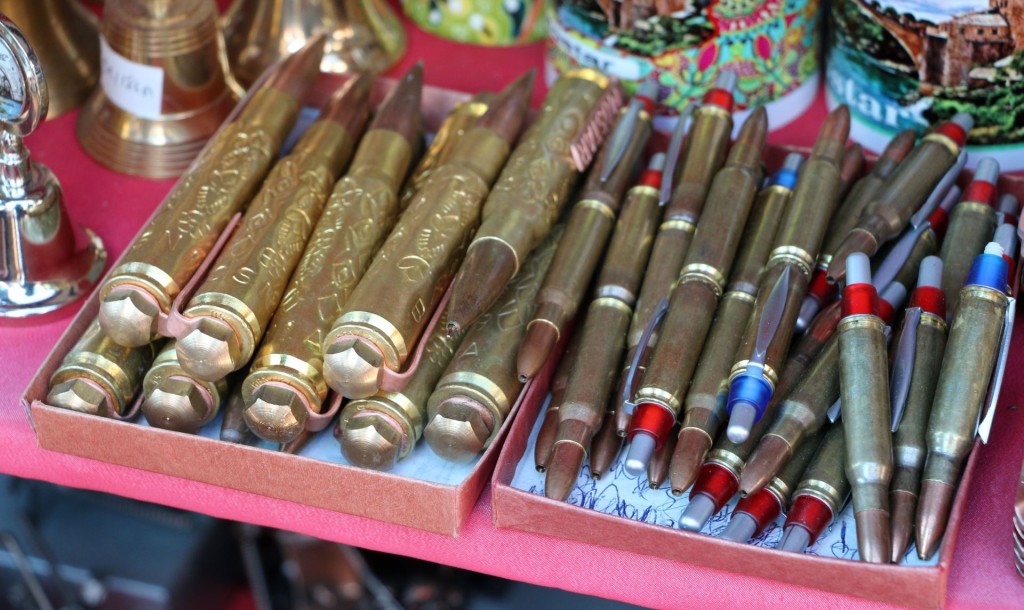
Although the summer season was almost over, several fit looking young man, wearing swimwear, were balancing on the edge of the bridge, 24 meters above the river. They asked the tourists crowding around for money, promising them that they would dive off the bridge as soon as they collected enough. Unfortunately … we waited under the bridge for more than half an hour without any action from above! Maybe the revenues were not sufficient …. or was the water too cold? By the way, the practice of diving off the bridge started in 1964 and became a tradition for the young men of Mostar. Each year, a formal diving competition is held, attracting flocks of day trippers.
After a walk around the old town, we had lunch on an open terrace above the river. In Mostar, most restaurants serve similar food, in particular “čevapčići” (small meat sausages served in flat bread) and other grilled meat. As far as I understood, the price difference mainly depends on the position of the terrace.
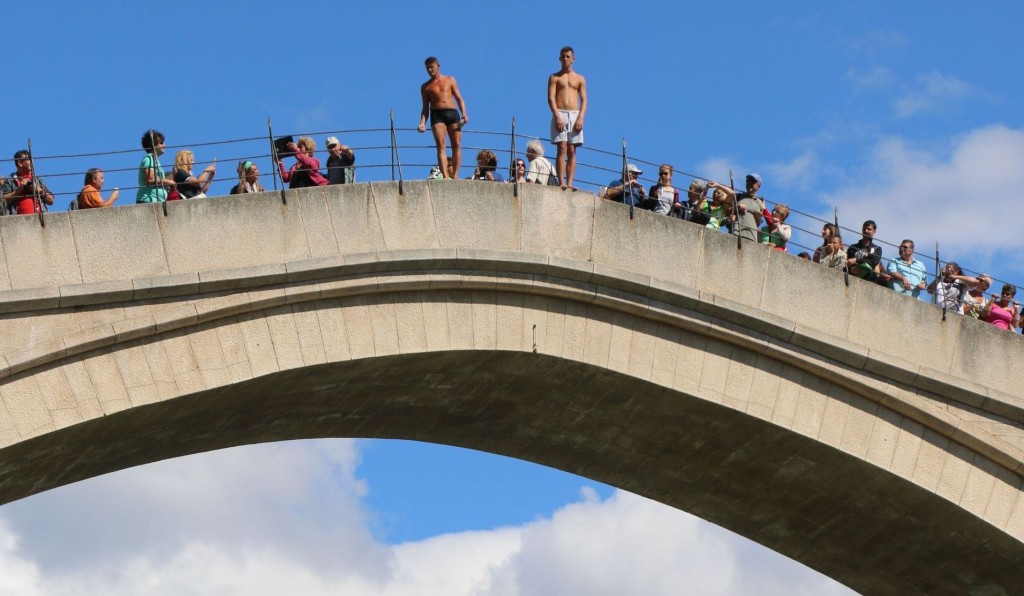
Of course, there are several other tourist attractions in Mostar: the Koski Mehmed Paša Mosque, built in 1618, is one of them. When you climb the 89 steps up a very narrow winding staircase in the minaret, you will be awarded with a fantastic view of Mostar and the Old Bridge – provided that you are not as claustrophobic as I am…
And finally, just an insider tip: there is another beautiful place to visit in the surroundings of Mostar: the Dervish House or “Teka” in Blagaj (see my post: Bosnia & Herzegovina: Blagaj, the Dervish house on the Buna river.) This “Dervish Monastery”, built in Ottoman style in the 16th century, is situated beside the blue-green Buna river that spills out of a dark cave under the cliffs. Many Muslim pilgrims from all over the world visit this holy place. But despite of the crowds, the atmosphere is relaxed and serene.
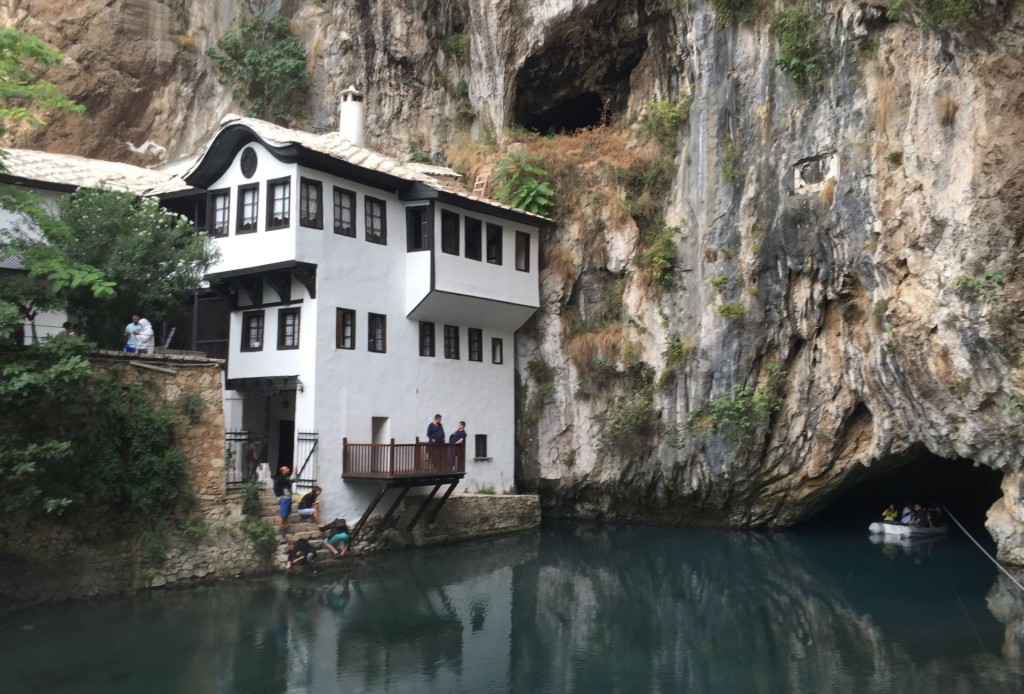


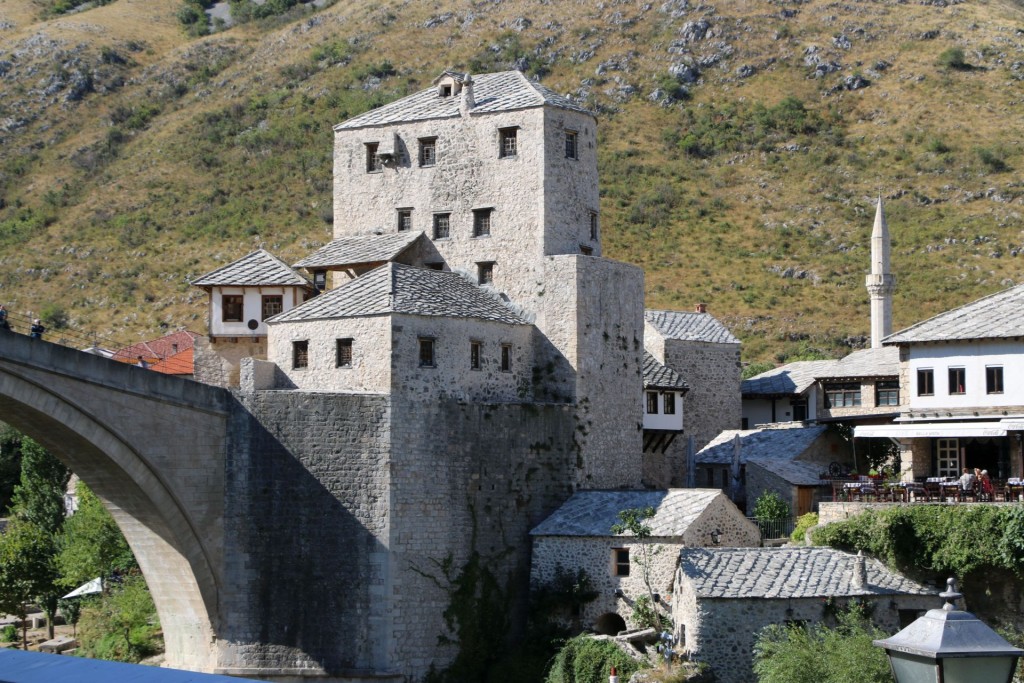
I have included your blog in Interesting Blogs in Friday Fossicking at
http://thatmomentintime-crissouli.blogspot.com.au/2016/10/friday-fossicking-7th-october-2016.html
Thank you, Chris
We only got to spend a full day/night there and it was very cool. I think the best part, was actually the evening when the tours left and the locals all seemed to come out of their apartments/houses and enjoy the settings themselves.
[…] Mostar […]
[…] most foreign tourists visit Sarajevo and Mostar only, there are many other interesting cities in Bosnia and Herzegovina. As we wanted to travel […]
[…] Bosnia and Herzegovina, you will pass through Stolac, a beautiful old town between Trebinje and Mostar, located on the banks of the Bregava river. And if you are interested in history and have an […]